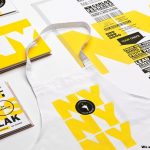Websites should make life easy for visitors when they are looking for the products or services you sell. A website that is easier to navigate and has a simple design is much more likely to retain customers than those that are confusing and take a long time to load. There are several techniques in web design which can help make your visitors stay longer and ultimately become customers.
The magic bullet of website design is that you should use your common sense and keep your design simple.
The following could help you to understand usability of a web design:
Never put too many over-powering images in your website. First, this kind of a site takes too long to load and the visitor goes away. Second, these types of images take the visitor’s focus away from whatever you are trying to convey. Try to use minimum number of relevant images which strictly pertain to the contents of your website.
Use good headlines. The headlines which you use need to be enticing and should have an impact on the visitor’s mind. You should be using the relevant keywords in your headlines and make it sound interesting so visitors want to find out more.
Use proper text color and size so that it is easy to read. Usually black text is used on a white background. You want the visitors to your website to feel comfortable going through the contents relating to whatever you have got to offer.
The images must be captioned. In newspapers each image generally has a caption. This makes it possible for readers to comprehend better what the image is. You should employ the same technique in your web designs and take care of the image sizes because the larger the size, the longer it will take to download.
Minimise clicks. When designing your website remember that the visitors to your site will never like to click too many times to navigate around. Do not include too many clicks in your website navigation system.
Keep text out of images. Search engines cannot read text embedded in images. Therefore, use texts rather than images for any images that contain texts.
Include interactive features. For example, a feedback or sign up form, blog, forum, survey, or glossary, etc. these are known as Web 2.0 features.
Avoid flash applications. These distract your visitors from the real purpose of your site.
Relevant Meta descriptions. Limit meta descriptions to about 150 characters. Use only the relevant keywords instead of a list of keywords which is considered as spamming by many search engines and one such is Google. Try to sell the click as this is what searchers will see in the search results.
Keep content snappy. The content of your website plays an important part as far as the visitors to your website are concerned. Lengthy articles or reports are deterrent to a visitor. Most do not have the time to read long articles and would be happy to read a few short paragraphs which should convey whatever they want to know.
Make it compatible. Your website must be run comfortably in the different browsers we know today, and should adhere to the different resolutions available in today’s computers.
Following these tips and putting yourself in your visitors shoes will help your website be as user friendly as possible. If you need help implementing any of these tips contact a professional web designer to make sure you aren’t scaring any users off.










